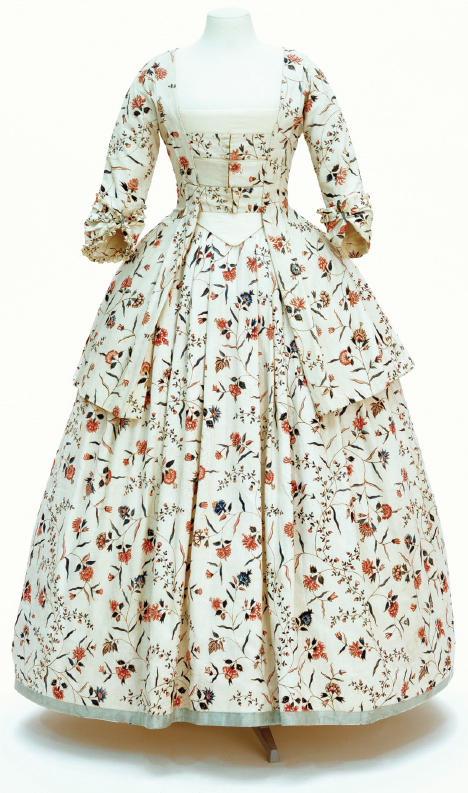Understanding World Societies:
Printed Page 501
Chapter Chronology

English Dress Made of Indian Printed Cotton Cloth
Early British traders in India were impressed with the quality of the textiles made there and began ordering designs that would be popular with the English. This dress, created around 1770–1780 in England, is made of printed cotton (chintz) from the southeastern part of India. Chintz became so popular in England that it was eventually banned because it was threatening local textile industries. (Victoria & Albert Museum, London, UK/Art Resource, NY)
IIT HAS WIDELY BEEN THOUGHT that a decline in the wealth and international importance of the Muslim empires could be directly attributed to the long-term shift in trading patterns that resulted from European overseas expansion. The argument is that new sea routes enabled Europeans to acquire goods from the East without using Muslim intermediaries, so that the creation of European colonial powers beginning in the sixteenth century led directly and indirectly to the eclipse of the Ottomans, Safavids, and Mughals. Recent scholars have challenged these ideas as too simplistic. First, it was not until the eighteenth century that political decline became evident in the three Islamic empires. Second, Turkish, Persian, and Indian merchants remained very active as long-distance traders into the eighteenth century and opened up many new routes themselves. It is true that in the Islamic empires New World crops fueled population increases less rapidly than in western Europe and East Asia. But economic growth does not always correlate with population increases.
Over the centuries covered in this chapter, the Islamic empires became not only more tied to European powers but also more connected to each other. Europeans gained deeper knowledge of Islamic lands, but so did residents of these lands, who more frequently traveled to other Islamic countries and wrote about their travels.
